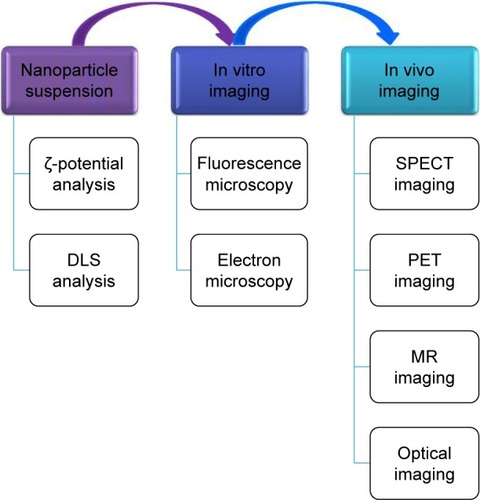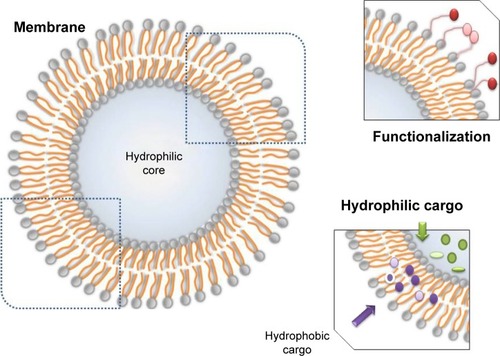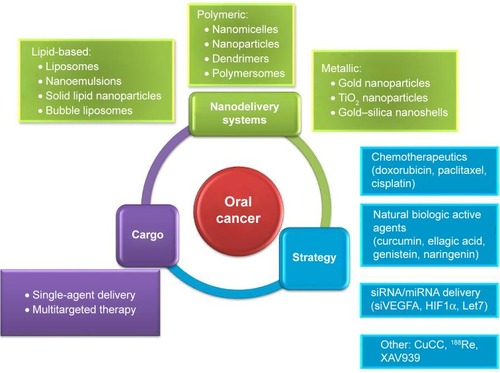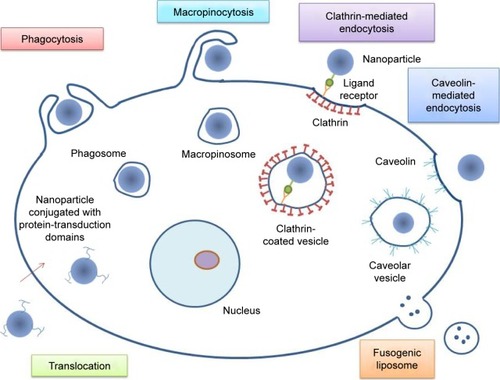Figures & data
Table 1 Characteristics of nanodelivery systems used for drug delivery
Figure 2 The main imaging techniques used for the characterizing of nanoparticles: when they are in suspension, following their internalization in cells in vitro imaging, or inside an organism in vivo imaging.
Abbreviations: SPECT, single-photon-emission computed tomography; DLS, dynamic light scattering; PET, positron-emission tomography; MR, magnetic resonance.

Table 2 Use of nanomaterial-based drug-delivery systems in oral cancer
Figure 3 Localization and types of cargo in a liposome.
Notes: Hydrophylic cargo is carried inside the core and the hydrophobic cargo within the membrane. The membrane can be conjugated with molecules for functionalization.

Figure 4 Nanodelivery systems used in oral cancer.
Abbreviation: CuCC, cupreous complex-loaded chitosan.


